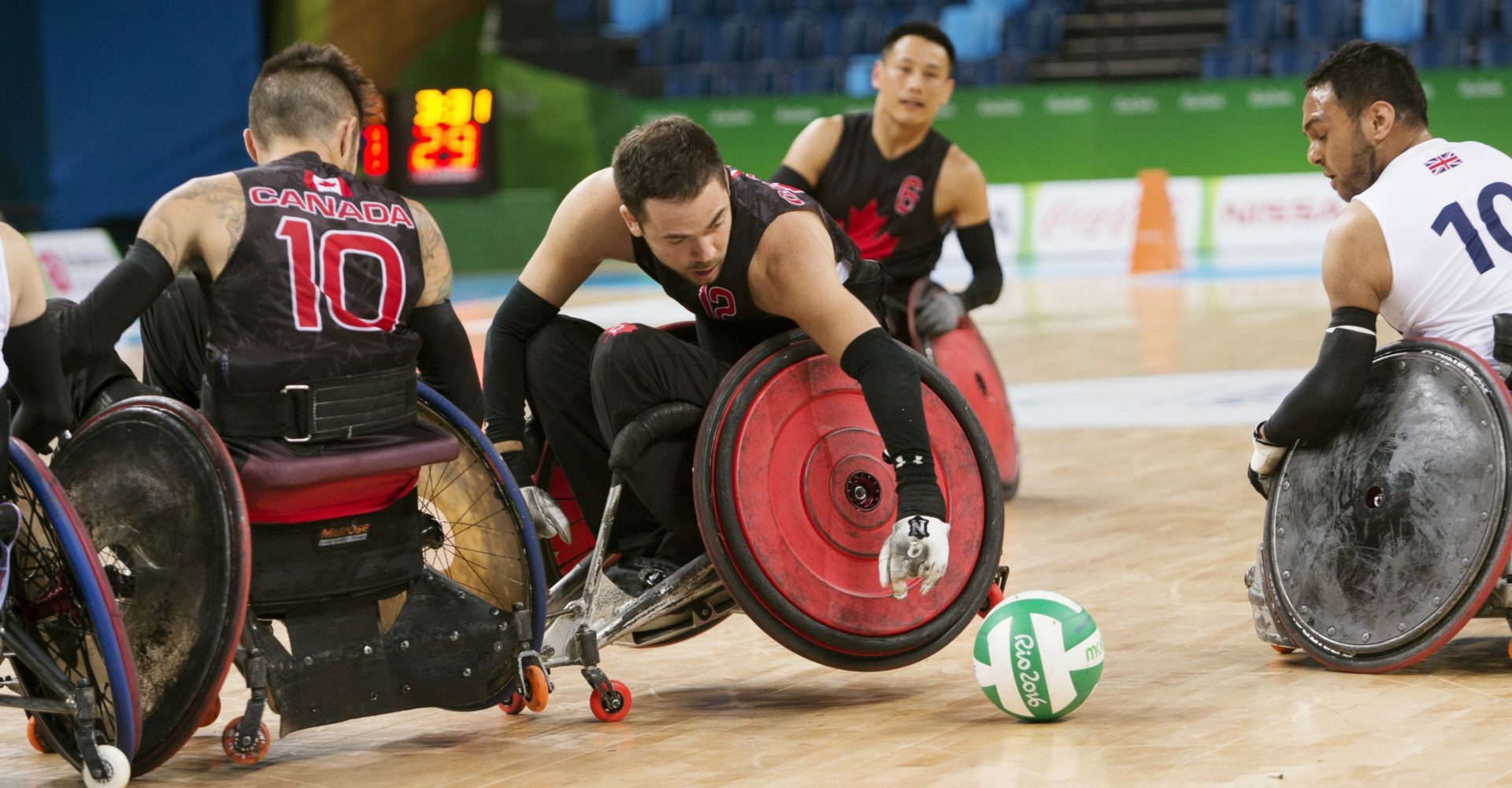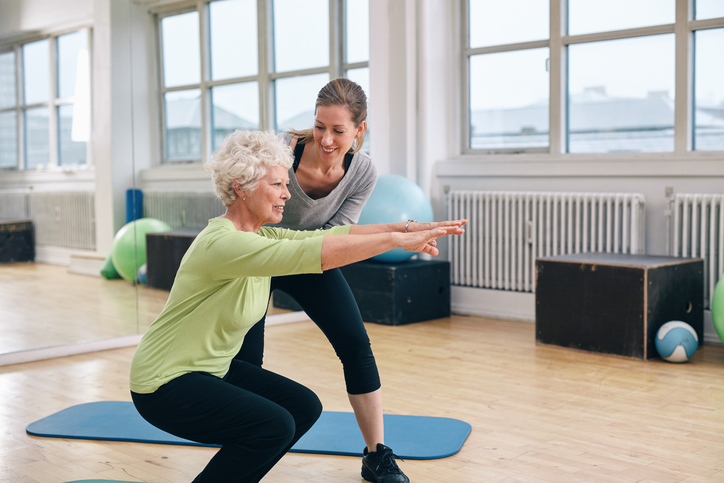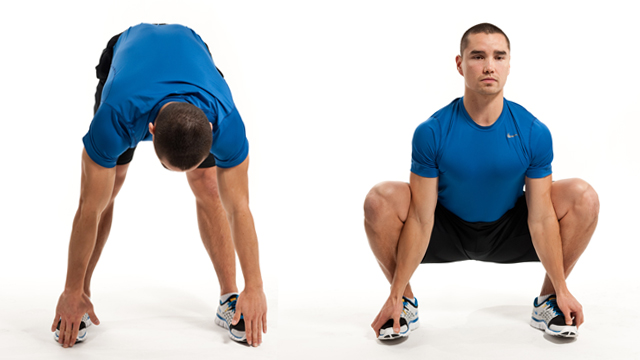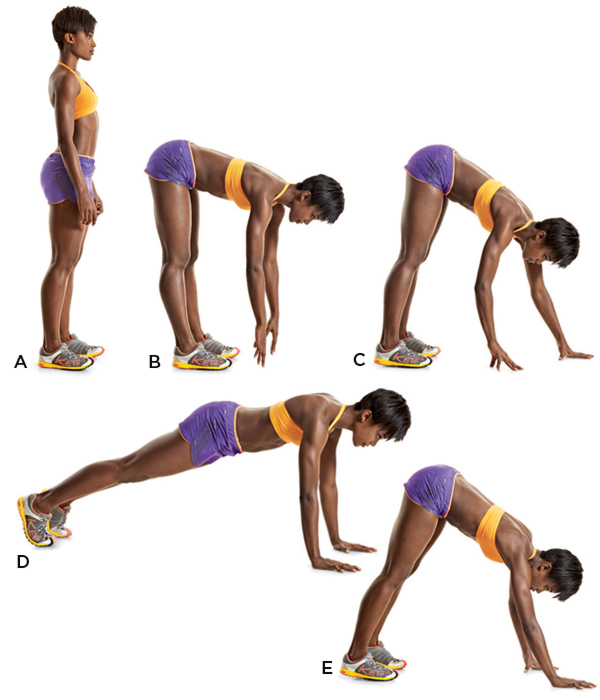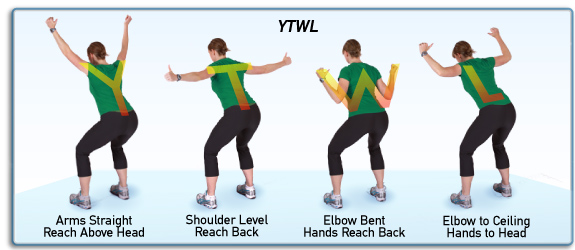Case 2: Wheelchair Spinal Cord Injury
Dave is a 38 year old male. He was injured in an accident three years ago and now has a paraplegic spinal cord injury. Before his accident he played high level hockey. He would like to improve his core strength. His goal is to try out for wheelchair rugby.
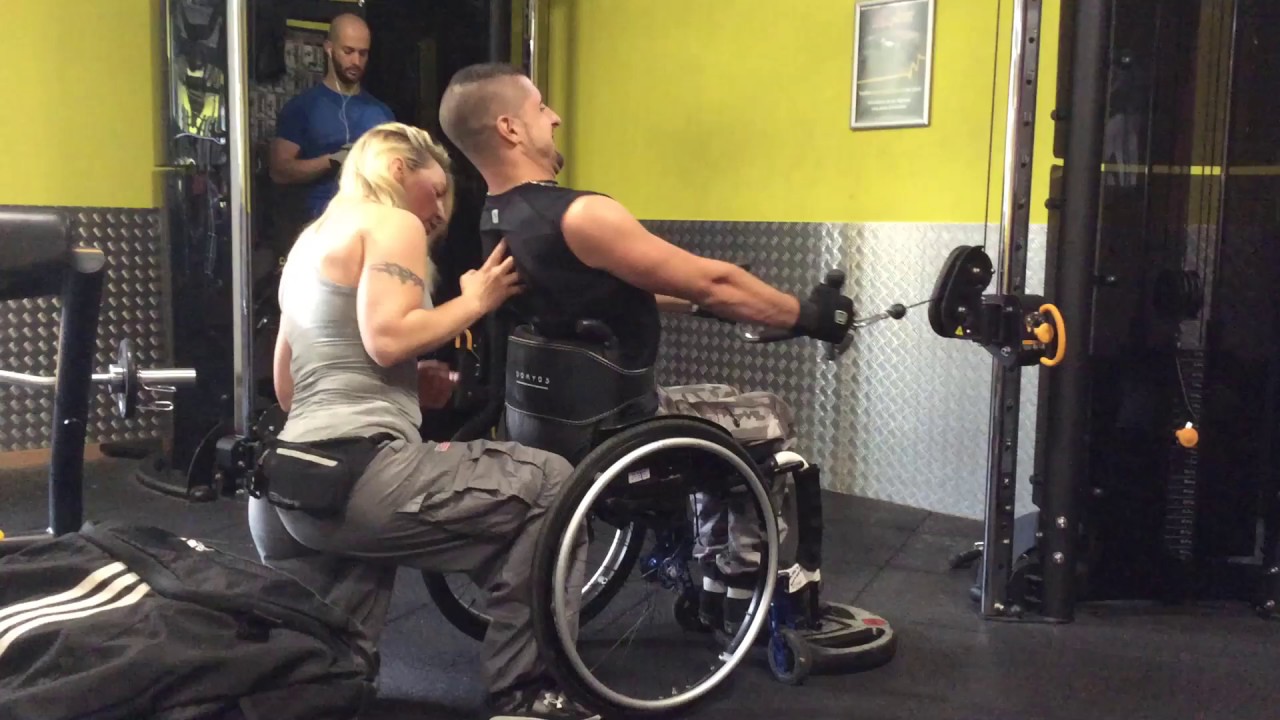
The following are a list of additional upper body exercises for clients that use wheelchairs and/or may need to remain seated during activity. The cable machine is an excellent equipment choice for wheelchair users as it allows for many adaptive angles and positions to better fit the client. Wheelchair users that have trunk control (e.g. lower level spinal cord injuries) can benefit greatly from cable machine exercise options.
Please practice coaching the exercises below:
1-Seated Cable Pallof Press
Questions to Consider: What height is appropriate for a client that uses a wheelchair? Could you also use a band? How would you set up the anchor?
| Movement Pattern: Core | stabilization | Target: Transverse Abdominus | Synergist(s): | |
| Exercise |  |
||
| Regressions: | Progressions: | ||
| Key Teaching Points | |||
|---|---|---|---|
|
|||
| Common Error(s): | Not engaging core | ||
| Spotting: | Mirror Client Level | ||
2-Seated Lat Pull Down
Questions to Consider: How will you accommodate a wheelchair? Could you attach the bar on the side cable stack? How will you safely pass/return the bar to/from your client?
| Movement Pattern: Pull | vertical | Target: Latissimus Dorsi | Synergist(s): Biceps | |
| Exercise | 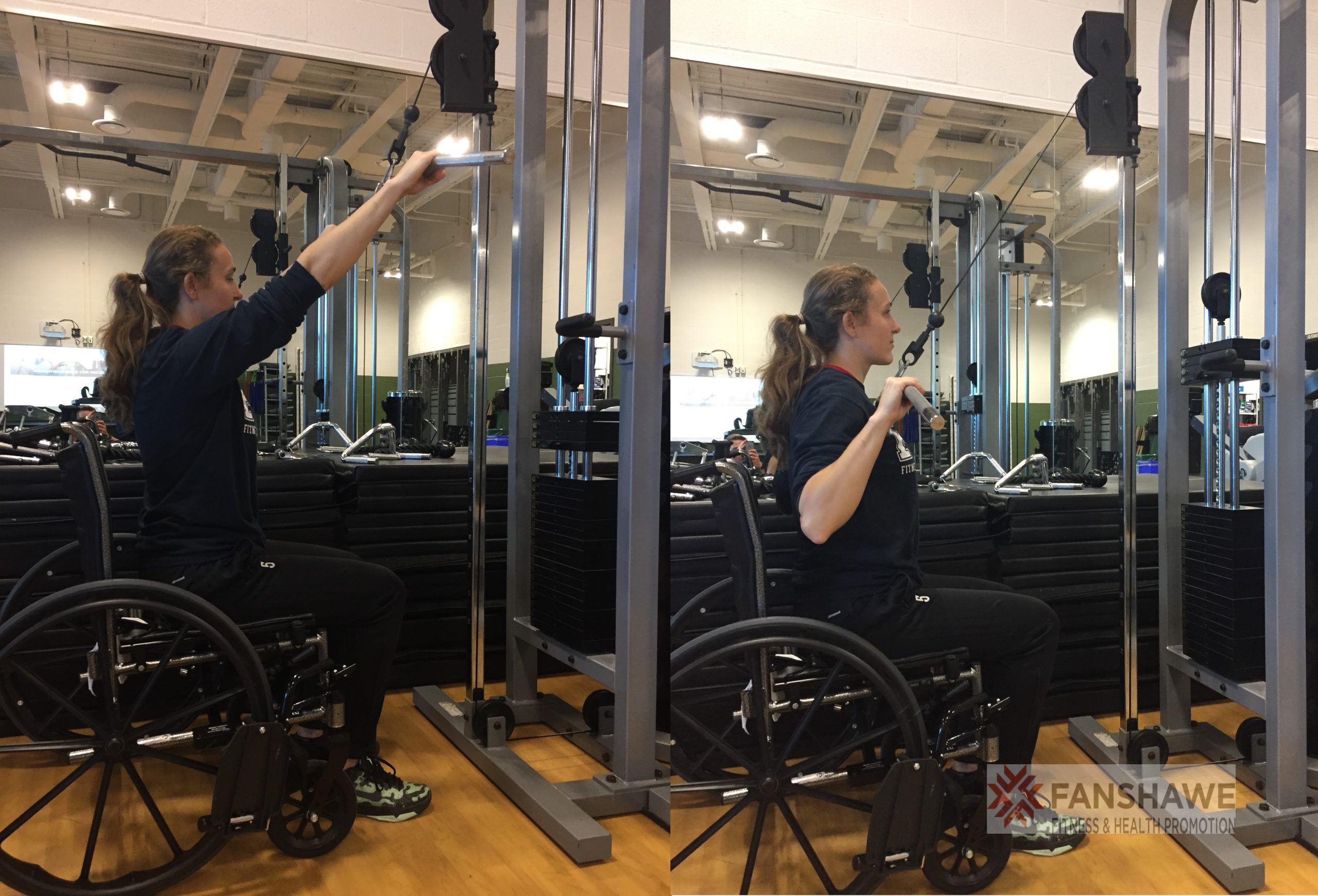 |
||
| Regressions: | Progressions: | Lat Pulldown | Inverted Row | |
| Key Teaching Points | |||
|---|---|---|---|
|
|||
| Common Error(s): | Inappropriate momentum | Forward Head Posture | ||
| Spotting: | Band/Tubing Anchoring | ||
3-Seated Cable Row
Questions to Consider: How might this differ if a wheelchair was involved? What happens when your client can lift heavy weight? How do you safely secure them to chair so they are not pulled out?
| Movement Pattern: Pull | horizontal | Target: Latissimus Dorsi | Synergist(s): Biceps, Rhomboids, Transverse Abdominus | |
| Exercise | 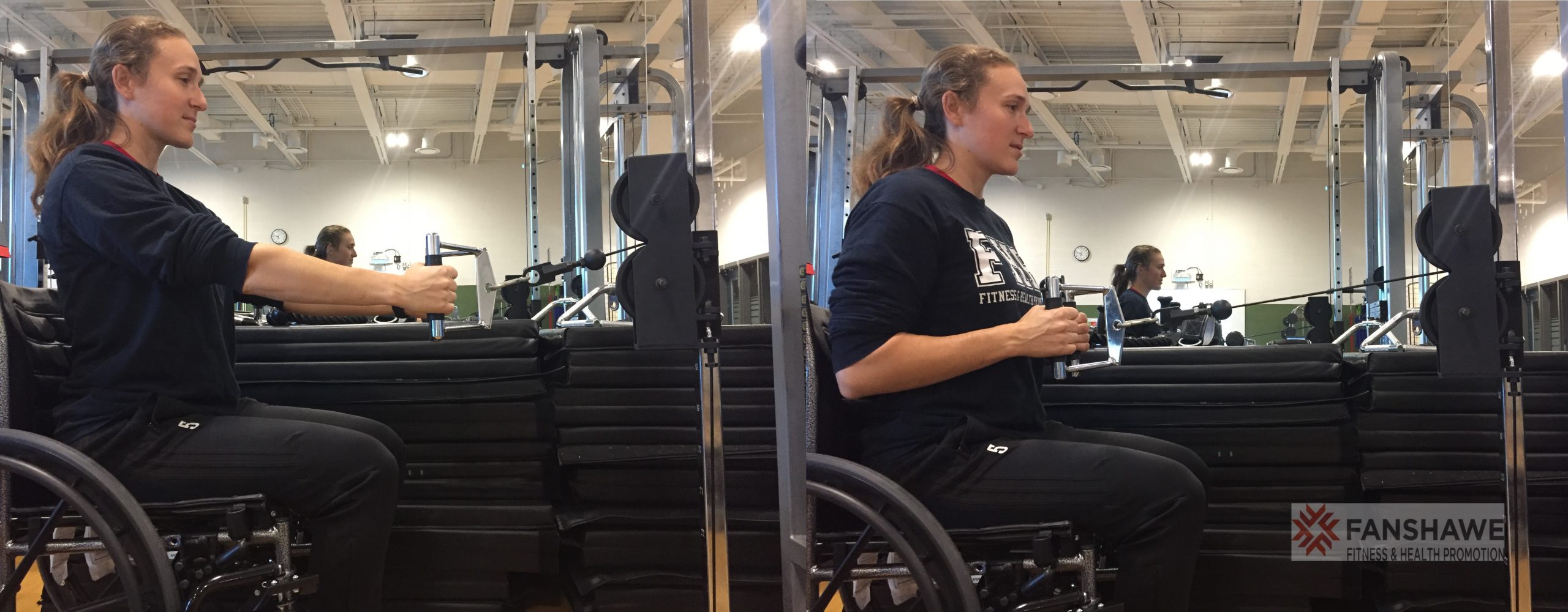 |
||
| Regressions: | Progressions: | ||
| Key Teaching Points | |||
|---|---|---|---|
|
|||
| Common Error(s): | Inappropriate momentum | Rounded shoulders | ||
| Spotting: | Cables | ||
4-Seated Side to Side Overhead Reach
Questions to consider: Be careful not to tip the chair.
| Movement Pattern: Upper Body | Target: Latissimus Dorsi | Synergist(s): Obliques | |
| Exercise | 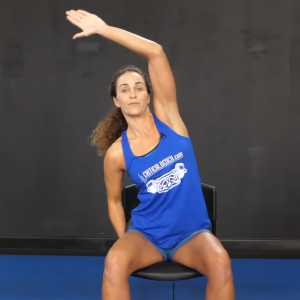 |
||
| Regressions: | Progressions: | ||
| Key Teaching Points | |||
|---|---|---|---|
|
Make sure wheelchair/chair is secure. Extend a fully extended arm overhead and then lean to the opposite side. Make sure not to tip the chair. Stretch should be felt in the lat and upper trunk. Don’t twist. Remaining in frontal plane. Alternate sides, each time improving range of motion. Pain free. |
|||
| Common Error(s): | Inappropriate momentum | ||
| Spotting: | |||
5-Seated Lat Stretch
Questions to consider: Could you hold onto a secure anchor (e.g. rig) to help increase the stretch?
| Movement Pattern: Upper Body | Target: Latissimus Dorsi | Synergist(s): Obliques | |
| Exercise |  |
||
| Regressions: | Progressions: | ||
6-Seated Dowel Overhead Chest Stretch
Questions to consider: Why might the pectoralis muscles be tight for this client?
| Movement Pattern: Single-joint | isolation | Target: Pec Major | Synergist(s): Deltoids (Anterior) | |
| Exercise |  |
||
| Regressions: | Progressions: | ||
| Key Teaching Points | |||
|---|---|---|---|
|
While standing or seated grip the dowel (or stretching strap) widely. Slowly extend arms overhead with elbows extended. Engage your core so that your rib cage does not rise up and maintain a neutral pelvis. The stretch should be within the anterior chest. There should be NO pain in the back of the shoulder joint. Clients with suspected should instability SHOULD NOT partake in this exercise. |
|||
| Common Error(s): | Arching the upper back | ||
| Spotting: | |||
7-Seated Trunk Twist
Questions to consider: What are some other resistance options besides a medicine ball. What special population would this be particularly useful for?
| Movement Pattern: Core | rotation | Target: Transverse Abdominus | Synergist(s): Obliques | |
| Exercise | 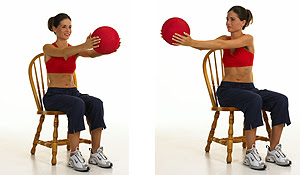 |
||
| Regressions: | Progressions: | ||
| Key Teaching Points | |||
|---|---|---|---|
|
Seated upright with slight backwards lean while still maintaining balance. Engage intrinsic core muscles. While holding medicine ball in hands slowly rotate from site to side while maintaining core contraction. Move hands farther away from the body to increase intensity. There should be no lower back pain. |
|||
| Common Error(s): | Not engaging core | ||
| Spotting: | |||
8-Seated French Press
Questions to consider: Is this functional? Why not use a shoulder press which trains both deltoid and triceps and is more functional?
| Movement Pattern: Single-joint | isolation | Target: Triceps | Synergist(s): | |
| Exercise | 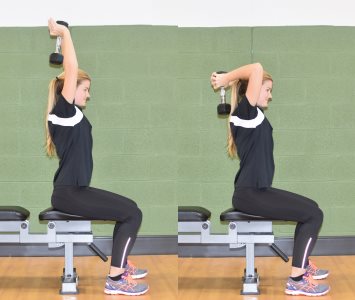 |
||
| Regressions: | Triceps Kickback | Progressions: | Dips |
| Key Teaching Points | |||
|---|---|---|---|
|
Seated upright. Carefully place DB overhead. Use help of trainer if available. Secure DB by holding DB handle tightly within overlapping hands. Start with elbows flexed. Initiate movement by engaging the triceps as you extend the elbows. Remain upright. Careful not to allow the DB to contact the head. Control the movement back down to the starting position. Spot at the wrists of the client. |
|||
| Common Error(s): | Inappropriate momentum | Forward Head Posture | ||
| Spotting: | |||













